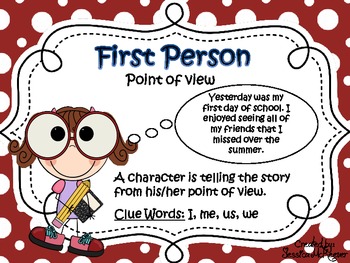

Point of Viewįirst, Second, and Third Person Pronouns Think of who You’re Writing for Therefore, writing in the third person indicates the author has little to no personal stake in the story. A narrator who uses “I” or “me” would likely be biased. It also comes across as being more objective. In other words, they invite the reader in without involving them directly. With the third person, authors can describe a character’s emotions or inner dialogue without claiming it. Third-person is the go-to choice for many fiction writers who want the ability to narrate their stories freely. Second person pronouns can also be singular or plural and may include “you,” “your,” “yours,” “yourself,” and “yourselves.”įirst, Second, and Third Person POV Infographic It’s also ideal for blogs, instructional guides, and other content that’s designed to compel the reader into action. You’ll most frequently see the second person used in direct communications, such as a letter or email. It’s also uncommon to use the second person in scripts, as it’s considered breaking the fourth wall. Though the second person can be used in fiction writing, it’s rare. Second person addresses the person being spoken to, likely the reader. Therefore, “you” is first person! René Descartes’ famous statement, “I think, therefore I am,” can be understood in three ways: as the real self, as the self that is constituted by the act of thinking, and as the first-person point of view. Need a trick to keep things straight? Remember this: You like to put yourself first. Understanding the star character’s perspective is important. It’s easier to identify with the protagonist of a novel, for example, when you read the dialogue in their voice. Sometimes, authors turn to first-person narration as a way to draw in the reader and make a connection. It’s always nice when the kids go to bed early, and we have the rest of the evening to ourselves. Writing in first-person means you use pronouns that make it clear the text is about you. Last but not least, the third-person perspective indicates that you are addressing the third party. Now, if you’re using the second person POV, you are addressing your readers. You narrate the story from your perspective.

If you’re using the first person in your writing, it means that you’re the speaker.

In writing, there are three types of points of view: the first, second, and third person. To begin with, a point of view refers to the perspective from which a piece of content is written. What are First, Second, and Third Person Points of View? Get ready-you’re about to become an expert! Writers use first, second, and third person in writing to describe points of view. In this comprehensive guide, we’ll walk you through all three perspectives and even offer up examples. Kidding aside, finding the right point of view that serves both your topic and your purpose doesn’t have to be stressful. First-person-is that like Neil Armstrong being the first human to step on the moon? Your professor may request an essay in the third person, and you’re trying to figure out who else is in the room beside you and her.

The concept of the first, second, and third person can be confusing. Third-person POV refers to outside entities like objects or people other than the author or the reader.First-person POV can be direct, using pronouns like you and your, or implied.The second person addresses the person being spoken to.First-person can be singular or plural and uses pronouns like I, me, and we.First-person indicates the author is writing about his/her feelings and/or point of view.


 0 kommentar(er)
0 kommentar(er)
